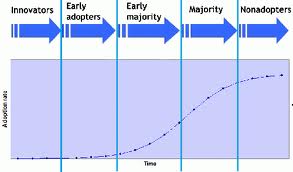
Understanding How Culture Drives Your Ministry
In organizations, it is the culture that provides the beat. This means that the same idea will perform differently in different organizations, even if nearly everything around it appears to be the same.
In an excellent post on culture, Dave Snowden says:
Culture arises from actions in the world, ways of doing things which may never be articulated, and which may not be capable of articulation. In effect culture is always complex, never complicated. So it follows that cultural change is an evolutionary process from the present, not an idealised future state design.
So the most singularly stupid meaningless thing you can ever do is to define what culture you want. At best it’s a set of platitudes, at worst its a set of pious platitudes that trigger negative and hostile accusations of hypocrisy from your employees and customers alike. Culture is an emergent property of interactions over time so the first and most important thing is to map your culture.
Snowden has a good system for mapping cultures, and great recommendations for trying to shift them. When we think about the culture that supports innovation, his three recommendations will also work. They are:
- Focus on actions. Snowden argues that actions tell us a lot more about your organization’s culture than rhetoric. This is true. If we are trying to build innovation, this means that being able to experiment is much more important than including innovation in your list of corporate values. The best way to build an innovation culture is to innovate, not to talk about it. Do this by building the capability to test ideas quickly and cheaply, and in such a way that you learn from the outcomes.
- Manage through constraints. Constraints are the things that determine current actions. They also drive creativity.
- Manage interactions and connections. In complex systems, emergent properties arise through networks of interactions. Building an understanding of your networks is crucial to improving innovation outcomes. Network weaving is a more effective management tool than organizational restructuring.
A common mistake that I see from organizations is taking an idea from somewhere else and trying to just bolt it on to an incompatible culture. Google’s 20% is a great idea, but it will only work if your people are empowered to make their own decisions, their regular work is rewarding, and you have the resources and desire to implement the ideas that they develop.
If your culture doesn’t include these qualities, then 20% will end up looking more like it does in this post by Shanley:
20% of the time, or all of the time, people can work on whatever they want to
What your culture might actually be saying is… We have enough venture funding to pay people to work on non-core parts of the business. We are not under that much pressure to make money. The normal work of the business is not sufficiently rewarding so we bribe employees with pet projects. We’re not entirely sure what our business objectives and vision are, so we are trying to discover it by letting employee passions take root.
The difference between that picture of 20% time and Google’s is culture.
Culture drives your ministry.
Read more from Tim here.

Tags: Innovation, Leadership Engine, Organizational Culture, Tim Kastelle





























